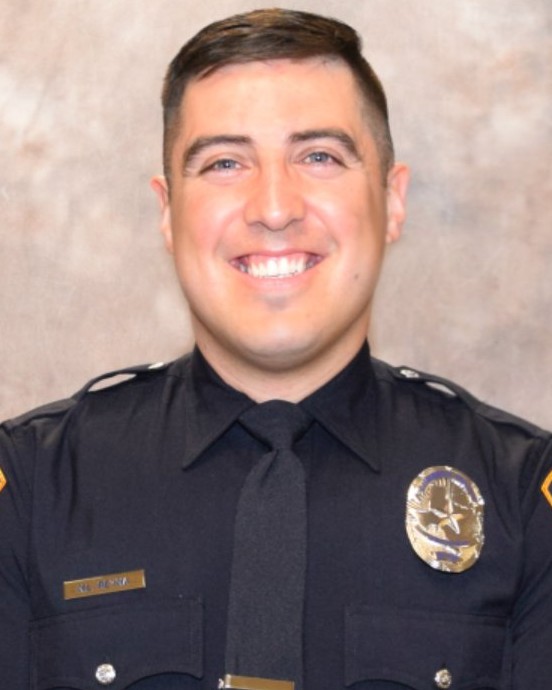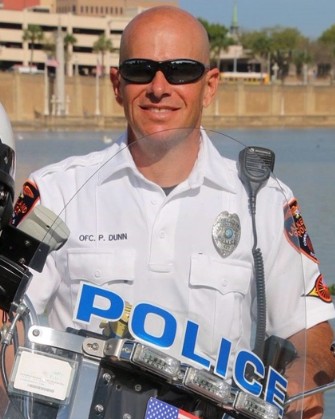In the recent issue with the captain of the
USS Teddy Roosevelt, I've heard multiple persons show how popular the captain was with his crew. One friend of mine (not a veteran) posted a meme from
Occupy Democrat, showing the "soldiers" applauding the captain leaving. It took a lot to explain to my friend his ignorance, there were no soldiers there, just sailors (and perhaps a few Marines). And another thing I had to explain, and he still didn't get.
Command is not a popularity contest.
The US Navy is organized around eleven carrier strike forces, of which the carrier itself is the focal point. It has the 100 (+/-) fighters, bombers, etc, to strike our enemy as needed, or just to project power to avert force being needed. It is impressive that a aviation strike force the size of many small nation's air forces can be moved within 200 miles of the coast of our enemies.
The basics of Captain Brett Crozier's actions are known. He sent a message, in an open channel, to over 20 recipients, with knowledge this was going to get leaked. He has just let our enemies know that one of our carriers, and at the time the only carries in the Pacific, was not operational due to manpower issues.
Was this a critical issue that had to be handled, absolutely. That's what you have the
US Navy Pacific Fleet Command to handle, not the
NY Times. One of the worse kept secrets is the fact our carriers carry nuclear weapons, although US policy is to neither "confirm or deny."
And last week the Chief of Naval Operations affirmed the relieve of Captain Crozier. I understand why Captain Crozier's did what he did, but did he screw up on the method.
The Navy was working on quarters for his crew, and getting rooms for over 4,000 officers and men is generally not done in a day.
While reviewing this issue, I found a very interesting blog,
Lawfire, hosted by USAF Major General (Ret) Charles J. Dunlap Jr. I'll highlight a few of his points, but I recommend you read the entire article, very enlightening.
Eight leadership lessons from the Navy carrier captain’s case
Charlie Dunlap, J.D.
Major General, USAF (Retired)
April 27, 2020
Last Friday the media reported that Navy leaders are recommending reinstatement for Captain Brett Crozier, the former commanding officer of the aircraft carrier USS Theodore Roosevelt (Roosevelt) who was relieved from command for the way he handled the COVID-19 outbreak aboard his ship. This post examines a few leadership lessons that should be learned from his case.
Regrettably, the hagiographic narrative surrounding Captain Crozier is creating the very real risk that the wrong leadership lessons will be learned and propagated, irrespective of what does or does not happen to him personally. If that occurs, the success of future military operations is imperiled, and troops could die. Some things really can be that simple.
To be clear, everyone agrees military leaders have the responsibility for the health and safety of those entrusted to them. Accordingly, Captain Crozier is to be rightly commended for being so concerned about the threat of COVID-19 to his crew. That doesn’t mean, however, that he handled his responsibilities the right way.
In this case, it’s especially important that we remind ourselves that despite all the accolades showered upon Captain Crozier, “no one will ever objectively know,” as a Navy officer notes below, “whether Captain Crozier achieved anything for his crew” by his actions that led to his tumultuous relief...
Background
Before we examine some of leadership lessons that might be learned, let’s take a look at some available information. The most useful re-capitulation of the series of events is in the timeline found here assembled by Defense One’s deputy editor, Bradley Peniston – and I encourage you to review it...
And if you want to review it, please do so. I'll start with MG Dunlap's excellent analysis.
...In moving forward, are there lessons to be learned? I think so. Although there is still much to learn about this situation, here are some possible lessons you might want to consider:
The lessons:
1) Senior military leaders should not assume a “peacetime” mindset in the midst of the risks intrinsic to 21st century “grey zone” conflicts.
The Roosevelt was operating in what most experts consider to be a precarious part of the globe where every action is scrutinized by opportunistic adversaries ready to exploit any apparent weakness on the part of U.S. forces. It is hard to know the extent to which Captain Crosier might have – or have not – appreciated this reality.
Despite the brevity of his email and letter, Captain Crozier repeatedly contended in them that it was “peacetime” and that “we are not at war” – in a way that almost made it seem like he was trying to convince himself. Inexplicably, he never even acknowledges any of the serious threats to what he calls “peacetime” in the Pacific despite the fact that they should have provided context for his decision-making that affected the readiness of the Roosevelt. His civilian superior, Secretary Modly, saw it differently than he did. Modly explained:
“[T]here is a larger strategic context, one full of national security imperatives, of which all our commanders must all be aware today. While we may not be at war in a traditional sense, neither are we truly at peace. Authoritarian regimes are on the rise. Many nations are reaching, in many ways, to reduce our capacity to accomplish our national goals. This is actively happening every day...”
See my comments above. We project our force via these carriers. If the only one in the Pacific is non-operational, that is something we cannot broadcast. If needed, we can move one carrier to the Pacific, or move a crew to man the
Roosevelt until the medical crisis is resolved. But again, we cannot broadcast this to the entire world, especially our enemies.
2) Military leaders need to maintain situational awareness in a crisis.
Situational awareness (SA) has been described as “the ability to see what’s in the vicinity and anticipate what’s not — knowledge that can mean the difference between surviving or being killed in action.” In its most basic military form, “it is knowing what is going on around you” so as to avoid the many perils that inevitably present themselves to those in the armed forces.
SA is a principle every military member needs to nurture, but especially those in command. It is a challenge to maintain it when one’s own emotions are high. Unfortunately, that may have been the case when Captain Crozier exited his ship after being relieved of his command by the Secretary of the Navy.
It is supreme irony that an officer who so forcefully insisted that the close quarters of his warship was life-threatening to his crew nevertheless tolerated hundreds of them – as the video found here shows – to crowd together to applaud him as he left the ship...
3) In crises especially, military leaders need to be careful about the example they set in their civil-military relations.
Civilian control of the military was once thought to be so ingrained in the American psyche that few thought much about it. In this instance we may never know whether the way Captain Crozier handled his dispute with the Navy’s civilian leadership actually helped or hurt the well-being of his crew, but we do know his disagreement with that leadership set in motion events that led to the forced resignation of the Navy’s senior civilian...
...Decide for yourself: did Captain Crozier know (or reasonably should have known) that his unclassified email and memo deriding the Navy’s efforts to address the situation aboard his ship would reach the public? If so, is that the way we want senior leaders to handle disagreement with civilian superiors? In any event, the cascading effect of Crozier’s actions was to deny the Navy the opportunity to manage the crisis as its civilian leader thought best for the service writ large. Here’s how retired Navy Captain Kevin Eyer analyzed the the situation on the U.S. Naval Institute’s blog:
“Captain Crozier precipitated the removal of one of the Navy’s few, most powerful strategic assets from the playing board. This hole cannot be filled without machinations that leave other holes and drag thousands of sailors back to long deployments early. The Navy was not allowed to work to a strategic “soft-fall,” and our potential enemies were given a wrong signal. That, if nothing else, cannot be forgiven...”
...To reiterate, appropriate and productive civil- military relations won’t exist in a democracy if military officers begin to assume Captain Crozier’s methodology is the clever way of addressing differences with civilian leaders as to how to deal with a complex problem. We should not want a system where civilian leaders come to expect that military subordinates will seek to circumvent them by appealing to the public when they dislike the direction the civilian leadership has determined is best.
The underlined point of the last sentence is borderline insubordination. Another thing we cannot tolerate. We had a similar issue like this in the Korean War, and the civilian expressed his view of his insubordinate flag officer, "He can do that to Harry Truman. He can't do that to the president of the United States."
4) In crisis situations, leaders need to think inclusively in terms of the organization as whole and not about particular career fields.
The now famous memo Captain Crozier wrote complaining that the Navy’s response to the COVID-19 outbreak on his ship was, in his view, inadequate, was itself curiously unaddressed.
However, it was attached to an email that was, but didn’t use an inclusive address such as “Sailors,” but instead directed it only to a select sub-faction in the Navy: “Fellow Naval Aviators.” Notably, it omitted Vice Adm. William Merz, a career submariner, but the officer “who oversaw the Roosevelt as commander of the Navy’s 7th Fleet.”
To civilians this may not mean much, but within the Navy it has real significance. The Navy has long been divided into a “brown shoe” culture of aviation officers and a “black shoe” culture of surface officers. Increasingly, this divide is not serving the Navy well. Reflecting on the “surface navy’s catastrophes in 2017,” two Navy lieutenants wrote:
“We’ve had enough of the “brown shoe,” “black shoe” cultural conflict in our navy, and it’s not just a surface – aviation divide. The real travesty is that the Navy’s community culture has created silos of knowledge, and in fact, overt hostility to those who are nominally our brothers and sisters in arms. It is this culture that ultimately led to a surface community searching for answers after a terrible 2017, when in fact the answers sat literally across the street in the Navy’s own aviation community. It is a moral travesty that it took the death of seventeen Sailors to force a reckoning in the SWO [surface warfare officer] community, but we’re there.“
At that time, the lieutenants were criticizing the SWO community for excluding the aviation community in the search for answers to a crisis manifested by a troubling series of ship collisions. Crozier seems to have made the same mistake, but in reverse, that is, addressing the issue as if only “Fellow Naval Aviators” would be concerned about the lives of sailors and embarked Marines, and only aviators could provide answers.
The Navy has long sought to counter such a divisive approach by advocating a “one team, one fight” attitude, but the Crozier email indicates that at best, he did not internalize that mindset. Actually, in times of complex crises involving diverse persons especially, leaders need to be inclusive in their thinking as solutions may come from beyond their own discrete career field.
It is unknowable if this episode would have come to a better end if, for example, Captain Crozier had sought to address his concerns through his commander at 7th Fleet instead of omitting him in favor of a collection of “Fellow Naval Aviators.” Still, putting aside the specific issues as to the propriety of Captain Crozier’s actions in the first place, it is well worth remembering that siloed advice is almost by definition going to be inferior to that produced by a process that brings to bear a range expertise on complicated problems.
5) In crisis situations, leaders need to put aside concerns about their own careers.
Captain Crozier concluded his email to his “Fellow Naval Aviators” by telling them that he was taking his action “regardless of the impact on [his] career.” In point of fact, it was hardly necessary to tell experienced senior officers to whom he addressed his email with its incendiary attachment about the potential career fallout from the way he elected to deal with the crisis.
Circumventing what Captain Crozier derided as mere “normal staffing processes” (that would have included his immediate commander at 7th Fleet) in what was a sensitive and high-profile matter being personally worked by the SECNAV rather obviously could have highly-adverse personal consequences for any officer in almost any situation...
Any ensign/second lieutenant would know they were sacrificing their career by Captain Crozier's actions.
6) Senior leaders, especially in complex emergencies, need to communicate in an effective way, and understand their options if they believe their concerns are being wrongly ignored.
According to a thoughtful and rather detailed analysis of Captain Crozier’s memo by Navy Captain Anthony Cowden, “there are effective ways of ‘speaking truth to power'” but Crozier’s memo “was not one of them.” Cowden concludes his examination by saying:
“[E]ffective writing should achieve the desired results without contributing to the author being relieved of his command. While many will express opinions on the subject, the fact is that no one will ever objectively know whether Captain Crozier achieved anything for his crew in writing this memorandum other than THEODORE ROOSEVELT getting a new commanding officer....”
Well put sir.
7) Commanders (as well as the media and the public) shouldn’t confuse popularity with good leadership.
As noted above, the media has been quick to point out that after being relieved Captain Crozier was cheered by hundreds of fawning sailors as he left the ship and as they tHemselves were making their way to being ensconced in Guam’s tourist resorts and spas for quarantine. (In contrast, the Army quarantined troops returning from Afghanistan in field conditions.)
Regardless, it’s axiomatic that great leadership is not a popularity contest. ...
...In another fabulous leadership book, Call Sign Chaos: Learning to Lead, General Jim Mattis makes this observation worth pondering in assessing the current case:
“Building trust and affection in units is not the same thing as chasing popularity, which relies on favoritism, nor does it replace the priority of accomplishing the mission. For this reason I came down hard on anyone who said, “Sir, my mission is to bring all of my men home safely.” That is a laudable and necessary goal, but the primary mission was to defeat the enemy, even as we did everything possible to keep our young men and women alive.”
Captain Crozier’s concern about his crew is likewise laudable and resonated with his juniors as well as with many other audiences but – again – the point is that popularity with subordinates (or, for that matter, with the public) is not necessarily the right barometer with which to measure effective military leadership.
In the drive up to Baghdad, General Mattis spoke having to relief the commander of RCT 1, something he did reluctantly, but without question. The commander was behind the other RCTs, and when asked, his answer was "he expressed his heartfelt reluctance to lose any of his men by pushing at what might seem to be a reckless pace." But General Mattis knew, the "mission must come first. Once you are committed, hesitancy in battle can expose other units to failure. I needed al hands in the fight, sharing the burden equally." (Mattis, Call Sign Chaos, pages 106-107).
Or in one saying I learned as a junior officer, "Mission First! People Always!"
8) Don’t trivialize potential civilian casualties as a mere “political” problem.
In his email, Captain Crozier declared that “at this point [his] only priority is the continued well-being of the crew and the embarked staff.” However, when civilian lives are also at risk, the well-being of his own unit can never be a military commander’s “only priority...”
Captain Crozier, sir, you have multiple priorities. But you primary mission, above all else, is the mission of your ship. And respectfully sir, you compromised that by your actions. And that cannot be without reaction.
It’s hard to know what Captain Crozier himself thinks as he reflects on what’s transpired. When Secretary Modly botched his visit to the Roosevelt, he concluded that his resignation would best serve the Roosevelt and the larger interests of the institutional Navy. Evidently, Captain Crozier has drawn no such conclusions about himself, or the value of his continued service.
Regardless of the disposition of Captain Crozier’s case, it’s imperative that the entire incident be evaluated to see what lessons can be learned. This post suggests some, but there are certainly more. If we can distill this episode to build better leaders in the future, it will serve to further strengthen the Navy, the Armed Forces, and our national security, particularly in times of crisis.
Still, remember our Lawfire">Lawfire® mantra: gather the facts, examine the law, evaluate the arguments – and then decide for yourself!
MG Dunlap, your mantra is very well put sir. I wish people would take those words in other issues of the day. Thank you for your excellent post, and I wish you the best.





.png?itok=L0WthT91)







.png?itok=dMsxIIDa)


